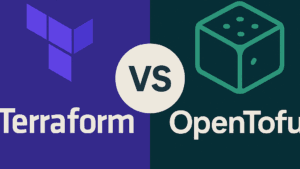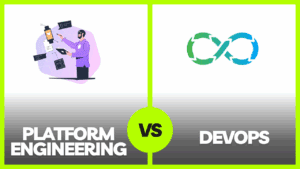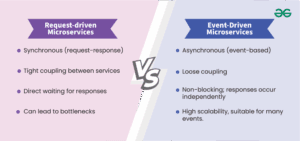“The Benefits of Infrastructure as Code for Scalable EKS Deployment” delves into the advantages of implementing infrastructure as code in order to achieve scalable deployment of Amazon Elastic Kubernetes Service (EKS). By leveraging this innovative approach, organizations can streamline their deployment process, minimize manual errors, and enhance the efficiency of their infrastructure management. With SlickFinch’s expertise in this area, businesses can unlock the full potential of infrastructure as code and ensure a seamless and successful EKS deployment. Contact SlickFinch today to explore how their experts can assist you in leveraging this powerful technique for your organization’s growth and expansion.

Introduction
Infrastructure as Code (IaC) has revolutionized the way organizations manage and deploy their infrastructure resources. In the era of cloud computing, where scalability and efficiency are paramount, IaC offers numerous benefits for deploying and managing a scalable Elastic Kubernetes Service (EKS). In this article, we will explore the advantages of using Infrastructure as Code for scalable EKS deployment and how it can help organizations achieve their goals efficiently and effectively.
What is Infrastructure as Code?
Infrastructure as Code refers to the practice of defining and provisioning infrastructure resources using code, typically in the form of declarative templates. It allows organizations to automate and manage infrastructure configurations, provisioning, and deployment, rather than relying on manual processes. With IaC, infrastructure becomes programmable, enabling organizations to treat it as software, apply software engineering principles, and reap the benefits of automation, consistency, and scalability.
Scalable EKS Deployment
Elastic Kubernetes Service (EKS) is a fully managed service by Amazon Web Services (AWS) that simplifies the deployment, management, and scaling of containerized applications using Kubernetes. EKS provides a reliable and scalable platform to run containers, making it an ideal choice for organizations looking to leverage the power of Kubernetes in a cloud-native environment. However, managing a scalable EKS deployment can be complex without the use of Infrastructure as Code.
Benefits of Infrastructure as Code for Scalable EKS Deployment
1. Improved Reproducibility and Consistency
With Infrastructure as Code, the entire infrastructure stack, including networking, security, and compute resources, can be defined and versioned as code. This ensures reproducibility and consistency in the deployment process, eliminating manual errors and minimizing configuration drift. Development, testing, and production environments can be easily replicated, ensuring that infrastructure remains consistent across different stages of the software development lifecycle.
2. Version Control and Change Tracking
By treating infrastructure as code, organizations can leverage version control systems (such as Git) to manage and track changes to their infrastructure configurations. This enables teams to review, collaborate, and roll back changes with ease. Version control also ensures that the infrastructure configurations are auditable, helping organizations maintain compliance with regulatory requirements.
3. Faster Provisioning and Deployment
Infrastructure as Code allows for automated provisioning and deployment of resources, significantly reducing the time and effort required to set up and configure infrastructure. Templates and scripts can be used to define the desired state of the infrastructure, and provisioning tools like AWS CloudFormation or HashiCorp Terraform can be leveraged to automatically create and manage the infrastructure resources. This automation results in faster deployment times, enabling organizations to respond quickly to changing business needs.
4. Simplified Scalability
Scalability is a critical requirement for organizations that need to handle varying workload demands. Infrastructure as Code simplifies the process of scaling the infrastructure resources supporting a scalable EKS deployment. By defining scalability rules and policies within the code, organizations can automatically adjust resource capacity in response to changing demand patterns. This ensures that the EKS cluster can handle increased workloads without manual intervention, making the infrastructure more elastic and efficient.
5. Enhanced Collaboration and Agility
Infrastructure as Code promotes collaboration and agility within cross-functional teams. By using code to define infrastructure, different teams, such as developers, operations, and security, can work together more effectively. Code can be reviewed, tested, and integrated seamlessly, allowing for faster feedback cycles and reducing silos between teams. This collaboration and agility result in improved productivity, increased innovation, and faster time-to-market.
6. Cost Optimization
Infrastructure costs can quickly escalate if not managed effectively. Infrastructure as Code enables organizations to optimize costs by providing visibility into resource usage and promoting efficient resource allocation. By defining infrastructure requirements in code, organizations can easily simulate and forecast costs before deployment. Additionally, IaC tools can automatically detect and remediate resource drift, ensuring that infrastructure resources are utilized in the most cost-effective manner.
7. Reduced Risk and Improved Disaster Recovery
With Infrastructure as Code, disaster recovery becomes more manageable and less error-prone. By defining infrastructure configurations as code, disaster recovery processes can be automated, reducing the risk of human error during recovery scenarios. IaC also facilitates the creation of consistent backups and snapshots, enabling organizations to recover their infrastructure quickly and efficiently in the event of a failure or disaster.
8. Security and Compliance
Security and compliance are critical considerations for any organization deploying infrastructure in the cloud. Infrastructure as Code allows for security and compliance policies to be defined and enforced through code. Infrastructure configurations can be validated against security best practices, ensuring that the infrastructure is secure and compliant. Code reviews and audits can be performed, reducing the risk of misconfigurations and vulnerabilities. Additionally, IaC tools provide the ability to track and monitor security-related changes, enhancing the overall security posture of the infrastructure.
9. Infrastructure as Code Best Practices for Scalable EKS Deployment
To maximize the benefits of Infrastructure as Code for scalable EKS deployment, organizations should adhere to certain best practices:
- Modularize infrastructure code to enable reuse and maintainability
- Use parameterized templates to make infrastructure configurations more flexible
- Implement proper testing and validation processes for code changes
- Leverage infrastructure as a code pipeline for automated builds, tests, and deployments
- Implement automated monitoring and alerting to detect and respond to infrastructure issues promptly
10. SlickFinch Experts Can Help
Implementing Infrastructure as Code for scalable EKS deployment can be a challenging task. Don’t fret, as SlickFinch has a team of experts who can guide you through the process. With our extensive knowledge and experience, we can assist you in leveraging the full potential of Infrastructure as Code for your EKS deployment. Contact SlickFinch today for expert assistance and take your scalable EKS deployment to the next level.
In conclusion, Infrastructure as Code offers numerous benefits for scalable EKS deployment. From improved reproducibility and consistency to enhanced collaboration and cost optimization, the advantages of adopting IaC are clear. By embracing Infrastructure as Code and leveraging the expertise of SlickFinch, organizations can unlock the true potential of their scalable EKS deployments.




